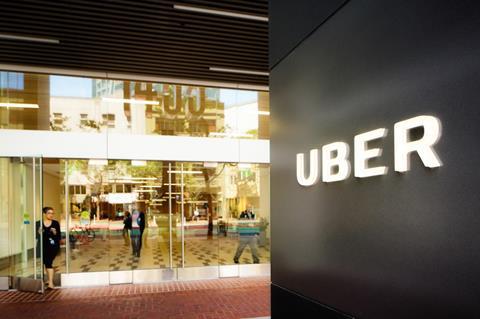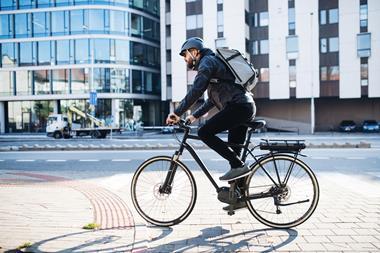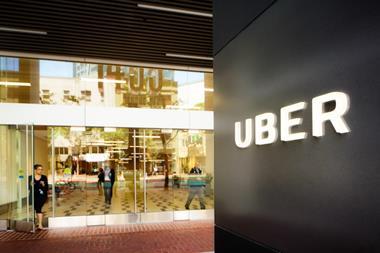As Uber has its London licence revoked over a “pattern of failures” including uninsured drivers, Insurance Times looks at the potential impact on the insurance industry and whether the sector might hold a solution to save it?
Could this be the end of Uber in London? A “pattern of failures” has led the regulator – Transport for London (TfL) to step in and revoke the taxi and private hire firm’s London licence.
TfL revealed earlier this week that 14,000 journeys with Uber were uninsured, it was this, coupled with safety breaches such as discrepancies over driver identity, which led to their decision.
But Uber vowed to appeal and is continuing to operate in London while this is underway.
Back in August Uber’s US arm reported a $5.2bn loss during its second quarter, it is its biggest ever quarterly loss.

Meanwhile the demise of Uber could have a major impact on the insurance industry, Yasha Kuruvilla, associate analyst at GlobalData said that TfL’s decision would affect specialised insurtechs that specifically cater to the ride sharing market.
“Companies like INSHUR and Zego are built around providing quick and flexible insurance to the ride sharing and ride hailing economy,” Kuruvilla explained. This would mean a significant drop in business for both as there would be less demand for this type of policy.
Predicament
“The predicament Uber finds itself in also points to a wider trend. Regulation often lags behind the market and TfL decision is just one example of this. Once economies grow to a size where regulators can no longer ignore it, decisions will likely be made that negatively affect businesses acting within them,” Kuruvilla added.
INSHUR entered a partnership with Uber in May while Zego has recently been granted its own insurance licence allowing it flexibility with products.
Kuruvilla said that both Zego and INSHUR, as well as other firms like them will be worried that one of their core customer groups may soon be non-existent.
Pointing out that insurtechs will be “disproportionately affected” by new regulation in the short-term due to their highly specialised nature compared to the larger incumbent players, Kuruvilla continued.
“It is simply a matter of time before new regulation hamstrings another insurtech in the market” Kuruvilla said, this is despite both Zego and INSHUR feeling the brunt currently.
Insurance partners
A spokesperson for Zego said: “Zego works with a number of new mobility companies in the UK and across Europe, one of which is Uber.
“We will continue to provide flexible insurance to Uber drivers in London while the company appeals TfL’s decision not to renew its licence. None of our customers will face disruption and there will not be any impact to our service.”
But it’s not just insurtechs that will be affected. Last year in May, Uber entered a partnership with AXA Group – the partnership saw the group provide a range of cover to the taxi firm for its drivers across Europe. This included cover for accident, injury, illness and paternity benefits.
Insurance Times contacted AXA Group regarding the matter but it declined to comment.
INSHUR has also been contacted for comment.
Claims for the uninsured
Although TfL made clear that Uber has improved after its 20-point system was implemented, it said that 14,000 journeys went uninsured. This probed the question – if an incident occurred now in an Uber taxi would it be covered by insurance? A change in Uber’s system allowed unauthorised drivers to upload their photos to other Uber drivers accounts allowing them to pick up passengers as if they were the designated driver. Therefore all these journeys were uninsured and some took place with unlicensed drivers.
Nick Godwin, a personal injury lawyer at Slater and Gordon, told Insurance Times: “If an Uber driver is uninsured, as with non-Uber uninsured drivers, the injured party will have a claim to the Motor Insurers Bureau under their Uninsured Drivers’ Scheme.
“All insurers who issue certificates of road insurance pay into the MIB scheme as a condition and that funds the damages claims of those victims of uninsured drivers who would otherwise have no insurer from whom to secure compensation.”
But could telematics and facial recognition solve Uber’s safety woes?
Telematics to the rescue
Speaking to Insurance Times, Simon Marsh, managing director at VisionTrack said that video telematics with facial recognition could help solve the safety issue for Uber by creating visual evidence that could be shared with the firm.
He added that facial recognition would benefit Uber by confirming who’s driving - the driver’s image could then be crossed matched with their approved driver database, any unknown drivers would not be able to use their app to get work. This would therefore eliminate different drivers being used by alerting Uber.
Marsh explained that video telematics can be used to confirm the driver, detect and warn on the following – driver distraction, fatigue and mobile phone use. Uber would then also be able to detect drivers who tailgate, speed and who would have a higher propensity of risky driving and are therefore more likely to cause an incident.
Meanwhile Jamie Heywood, Uber’s regional general manager for Northern and Eastern Europe said that the firm has had “robust systems and checks in place to confirm the identity of drivers” and that it will soon be introducing a facial matching process.
Similar firms seem to be more advanced than Uber however, insurtech and ride-hailing giant – Grab which launched in 2013 and is headquartered in Singapore was its major rival. However in March 2018, Grab acquired a 27.5% stake in Uber’s South East Asian operations which eventually led to it it taking over its business in that region.
Grab is an all-in-one app which combines transport, food delivery, hotels, subscriptions, and cinema tickets as well as using facial recognition where all users are required to take a selfie when signing up for an account.
Hosted by comedian and actor Tom Allen, 34 Gold, 23 Silver and 22 Bronze awards were handed out across an amazing 34 categories recognising brilliance and innovation right across the breadth of UK general insurance.





















































No comments yet